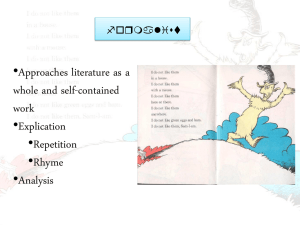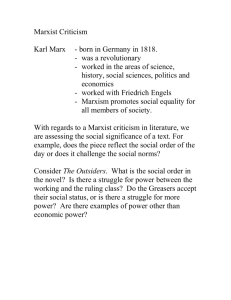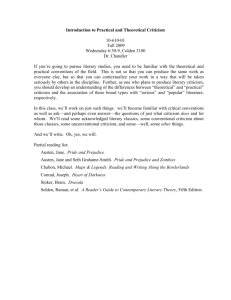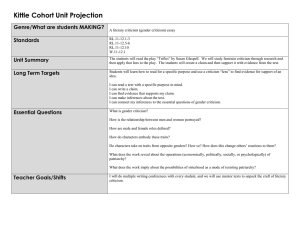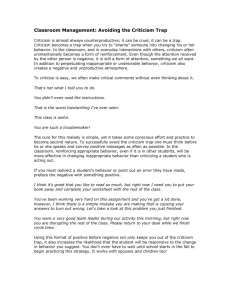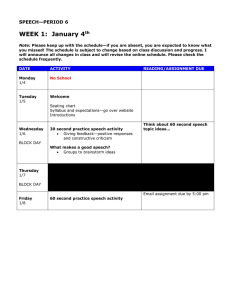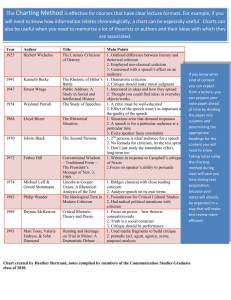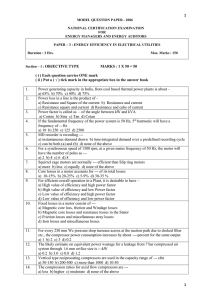Peter Elbow, MARIST COLLEGE, 4/01 SOME USEFUL IDEAS AND POINTERS
advertisement
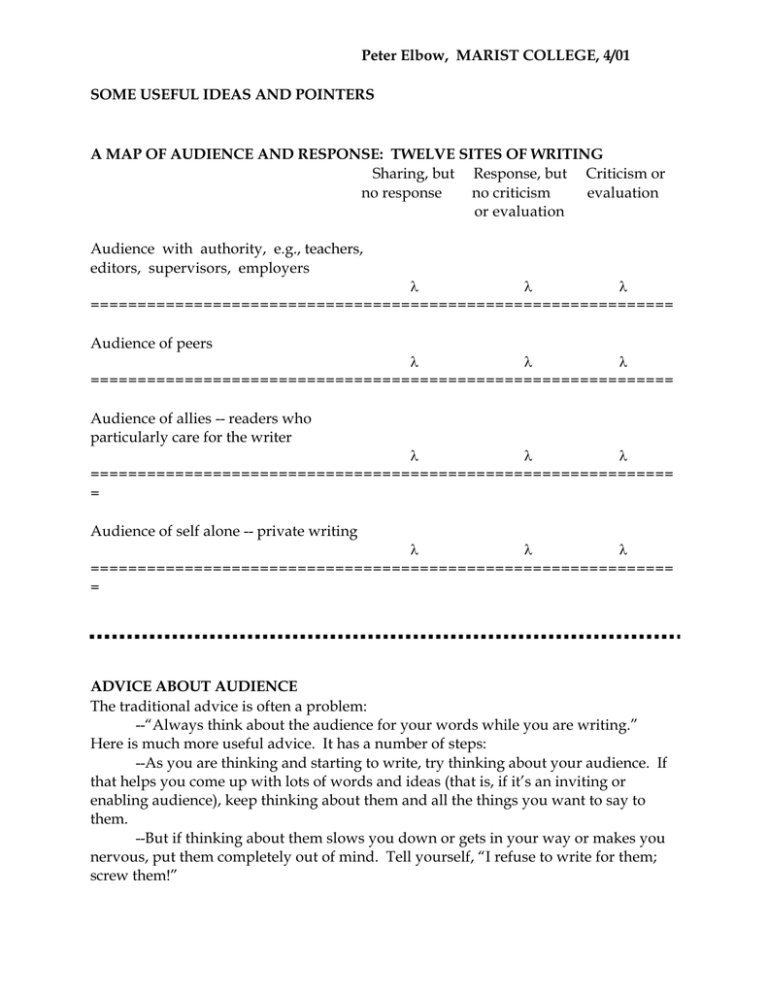
Peter Elbow, MARIST COLLEGE, 4/01 SOME USEFUL IDEAS AND POINTERS A MAP OF AUDIENCE AND RESPONSE: TWELVE SITES OF WRITING Sharing, but Response, but Criticism or no response no criticism evaluation or evaluation Audience with authority, e.g., teachers, editors, supervisors, employers λ λ λ ============================================================== Audience of peers λ λ λ ============================================================== Audience of allies -- readers who particularly care for the writer λ λ λ ============================================================== = Audience of self alone -- private writing λ λ λ ============================================================== = ADVICE ABOUT AUDIENCE The traditional advice is often a problem: --“Always think about the audience for your words while you are writing.” Here is much more useful advice. It has a number of steps: --As you are thinking and starting to write, try thinking about your audience. If that helps you come up with lots of words and ideas (that is, if it’s an inviting or enabling audience), keep thinking about them and all the things you want to say to them. --But if thinking about them slows you down or gets in your way or makes you nervous, put them completely out of mind. Tell yourself, “I refuse to write for them; screw them!” --Instead, write only for yourself--or write in the form of a letter to the most inviting audience you can think of. Don’t worry that this leads to writing that seems completely unsuiable for the actual audience. The goal is making the process of writing as satisfying and comfortable as possible. Keep writing till you find as many ideas and words as you can come up with. Don’t struggle; don’t worry about organization or “good writing.” --Then think about your audience. With your audience in mind, do whatever organizing, rewriting, and “reframing” is necessary. Perhaps you’ll skip some ideas; perhaps add a few others. No doubt some reframing--recasting. You will probably need to organize or re-organize (but don’t throw away interesting or useful progressions of thinking that came naturally as you wrote without worrying). You will probably need to change the tone and clean up the writing, (but don’t let your writing get stiff or pompous--just make it clean). You may be surprised at how little you need to do to change this “inappropriate” writing to fit the audience. ********************************************************************* THE QUICKEST AND MOST USEFUL WAY TO USE AN AUDIENCE 1. Read or “talk through” to them your exploratory writing or very early rough draft. Ask them for “sayback,” that is, to tell you the ideas they hear as well as the ideas they “sort of hear hovering around the edges.” Ask them also to tell you the ideas they come to their minds after listening to you--ideas that they are willing to let you use. If they want to argue with your ideas, decide carefully whether this will actually help you or not. It might not. 2. Read outloud to them a pretty-good-but-not-final draft. The act of reading to them will actually provide feedback from yourself to yourself: feedback about your progression of ideas and the clarity of your sentences and the suitability of the voice or tone. As you read, you can stop and make changes or notes for changes. Then get your listener(s) to give you “sayback”: what ideas do they hear there and almost there. You can ask for criticism and advice if you want, but I don’t necessarily advise it. Criticism and advice are much less trustworthy and they take a lot more time than those things I’ve just mentioned--and sometimes they undermine a relationship. ******************************************************************** BENEFITS OF CONSISTENT FREEWRITING --Fluency, comfort, and quantity. You can come up with lots of words and ideas quickly and without much strain. --A beginning sense of oneself as a writer--not just a student or question answerer. --The ability to concentrate and give fuller attention to writing. --Passages with energy, liveliness; flexible lively syntax, sentence variety, live rhythms; the opposite of stiffness. --A wider range of vocabulary when writing about academic matters; ie, the ability to use everyday words and metaphors for processing academic concepts; which leads to the internalization of these concepts. --Passages with strong voice--i.e., --Words with an actual sound of a voice; audibility. --Words that sound like a person--that give the reader the strong sense of a character or consciousness uttering them. One feels “someone at home” in the writing. --Passages or whole pieces where you takes more authority for your words or her thinking--where your writing shows the conviction to speak out. --Passages or whole pieces that show active thinking--i.e., --Passages that show questioning, inquiry, perplexity--the ability to explore an issue that actually interests and bothers you--instead of just summarizing what you already understand. --Passages or pieces that show movement of thinking. The writing actually goes or gets somewhere instead of just hammering one nail over and over. The writing enacts thinking in action--a mind in the process of working out a train of thought. This is the opposite of static writing that merely records completed or past thinking.
